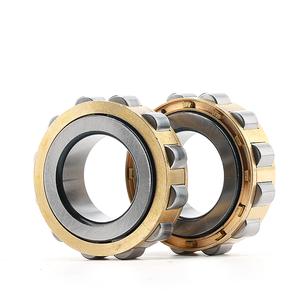2023 Roller Bearings Price List: Top Suppliers, Cost Comparison
Roller bearings are critical components in machinery, reducing friction between moving parts. Understanding their pricing involves evaluating factors like material quality, load capacity, precision grade, and supplier reliability. This guide analyzes current market prices, cost-saving strategies, and key considerations when purchasing roller bearings for industrial applications.
Table of Contents
1. roller bearings price list 20232. best roller bearings suppliers
3. compare roller bearings prices
4. industrial roller bearings cost
5. wholesale roller bearings prices
1. Roller Bearings Price List 2023

The 2023 roller bearings market shows price variations between 5%–12% compared to 2022, influenced by raw material costs and supply chain improvements. Standard tapered roller bearings range from $8.50–$45 per unit, while precision cylindrical roller bearings cost $120–$400 depending on ISO classification. Large-scale industrial bearings (over 500mm diameter) can exceed $2,800. Market analysis indicates stainless steel variants maintain 15%–20% premium pricing. Leading manufacturers like SKF and Timken have announced 3%–7% price adjustments for Q4 2023. Buyers should verify MOQ requirements (typically 50–200 units) and consider bulk purchase discounts when comparing quotes.
2. Best Roller Bearings Suppliers
Top-tier roller bearing suppliers differentiate through certification compliance (ISO 9001, ABMA standards), technical support, and customized solutions. NSK Global offers advanced sealed roller bearings with 30% longer service life guarantees. Schaeffler Group provides sector-specific solutions for automotive and aerospace applications. Emerging suppliers from India (ABC Bearings) and China (LYC Bearing) now capture 28% of the global market share through competitive pricing strategies. Key selection criteria should include lead time reliability (average 4–8 weeks), warranty terms (1–3 years), and after-sales technical documentation quality.
3. Compare Roller Bearings Prices
Price comparison requires understanding technical specifications: dynamic load ratings (C) range from 10 kN to 1,500 kN, directly impacting cost structures. Online marketplaces show 25%–40% price differences for identical ISO classifications. Cross-referencing technical drawings with supplier quotes prevents specification mismatches. Third-party inspection services (costing $150–$500 per order) verify dimensional accuracy and material composition. Recent data indicates Chinese suppliers offer 15%–30% lower prices than European counterparts, though buyers must account for potential 10%–18% import duties and longer shipping durations (35–50 days).
4. Industrial Roller Bearings Cost
Industrial-grade roller bearings require specialized manufacturing processes, with hardened steel variants costing $75–$600 depending on tolerance levels (ABEC 1–7). High-temperature versions (operating up to 350°C) carry 40%–60% price premiums. Customized solutions for mining equipment or wind turbines can reach $8,000–$15,000 per unit. Lifecycle cost analysis should consider maintenance intervals – premium lubricated bearings reduce replacement frequency by 2–3 years. Energy efficiency ratings (verified through ISO 14001 certifications) impact long-term operational costs, with optimized designs saving 7%–12% in power consumption.
5. Wholesale Roller Bearings Prices
Wholesale purchases (500 units) typically secure 18%–35% discounts. Tiered pricing structures become available at 1,000-unit increments, with some suppliers offering consignment stock agreements. Container-load purchases (20–40 pallets) optimize shipping costs by 22%–40%. Emerging wholesale platforms provide real-time price tracking across 150 suppliers, though buyers should verify supplier credentials through third-party audits. Recent market data shows wholesale buyers achieve 14% average cost reduction through combined sea freight optimization and bulk material procurement partnerships.
Understanding roller bearings pricing requires analyzing technical specifications, supplier capabilities, and market trends. The 2023 market presents opportunities through improved manufacturing technologies and expanded global supplier networks. Whether seeking precision components for aerospace applications or cost-effective solutions for automotive production, buyers must balance initial costs with lifecycle performance metrics. Explore our detailed comparisons of tapered, spherical, and cylindrical roller bearing prices across different regions and industries to make informed purchasing decisions.
Final Thoughts
This comprehensive guide equips buyers with essential knowledge about roller bearings pricing structures, supplier evaluation criteria, and market trends. By understanding technical specifications, cost drivers, and procurement strategies, businesses can optimize their bearing purchases for both performance and budget requirements in 2023 and beyond.




 13869596835
13869596835